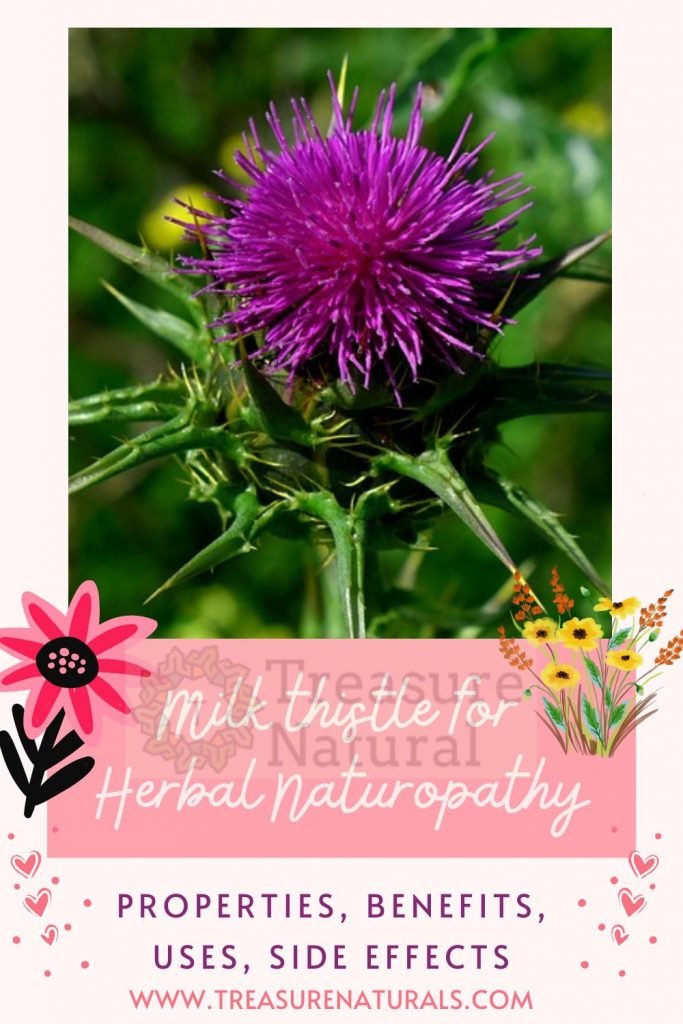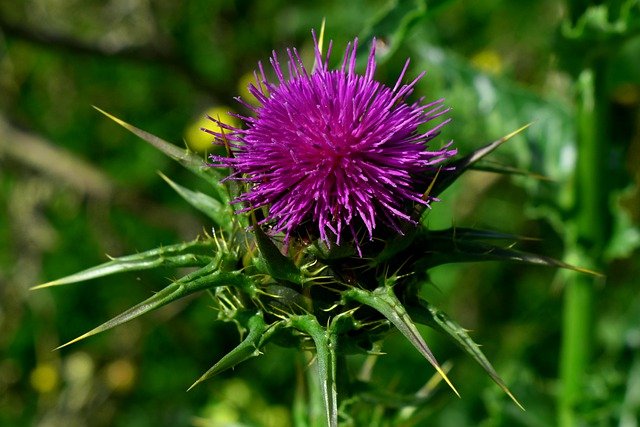
Thistle is known for its hepatoprotective action, linked to silymarin. Its intake is indicated above all to support the liver in case of hepatitis and damage caused by alcohol or other toxic substances.
Milk thistle (Silybum marianum) is a plant that belongs to the Asteraceae family. Indicated to improve liver function, it also has excellent antioxidant properties.
- Properties of milk thistle
- What milk thistle is used for
- Benefits of milk thistle
- How can milk thistle be taken?
- How to use
- Contraindications
- Description of the plant
- Habitat of milk thistle
- Background
Properties of milk thistle
Milk thistle has above all hepatoprotective and regenerating properties on liver cells.
In addition, this remedy has:
- Antioxidant action;
- antihemorrhagic action;
- slight spasmolytic action.
Milk thistle then has:
- Tonic action on blood vessels, such as to increase blood pressure,;
- is galactogen (stimulates the production of breast milk);
- has digestive properties.
The fruits of milk thistle are used, but the intake of the leaves also brings benefits. The leaves of milk thistle have diuretic, tonic and cholagogue properties.
The properties of milk thistle are mainly attributed to a complex of flavolognans known as silymarin present in fruits. Both the fruits and leaves of milk thistle also contain other compounds, including:
- Flavonoids;
- proteins (including tyramine);
- lipids;
- mucilage.
What milk thistle is used for
Milk thistle is mainly used to treat liver disorders. The benefits of milk thistle for the liver have been attributed to silymarin and are based on antioxidant, anti-inflammatory, cytoprotective and regenerative mechanisms on liver cells.
Milk thistle also serves to relieve digestive disorders of hepatic origin and to reduce cholesterol levels in dyslipidemias.
Sometimes it is recommended to take milk thistle to lose weight for its action on the liver and biliary tract and, consequently, on the digestion of fats.
Finally, milk thistle is traditionally used to stimulate breast milk production during breastfeeding.
Benefits of milk thistle
Preparations based on milk thistle are useful in case of viral hepatitis, alcoholic hepatitis, hepatic steatosis, intoxication of the liver given by drugs. When degenerative processes are still reversible, the administration of milk thistle is able to promote the regeneration of liver cells.
Milk thistle brings benefits even in case of slow and difficult digestion and helps prevent seasickness and car sickness and helps. In addition, it is useful to normalize blood sugar and blood cholesterol levels.
It also seems that milk thistle is able to increase blood pressure, improve the tone of the vessels, reduce mental fatigue.
Externally, the topical use of milk thistle prevents skin aging and promotes the healing of dermatitis and erythema.
How can you take milk thistle
Milk thistle can be taken by infusion of fruits and leaves, as a mother tincture or in the form of food supplements containing milk thistle extract titrated in silymarin at least 1%.
On the market there is also milk thistle oil, extracted from the seeds present in the fruits. It is used for the antioxidant and anti-inflammatory properties given by the presence of essential fatty acids and vitamin E.
How to use
Infusion
Milk thistle herbal tea can be prepared with a teaspoon of dried fruits or with half a teaspoon of dried leaves, infused for 10 minutes in a cup of water. Consume two or three cups a day half an hour before meals.
Mother tincture
30 drops diluted in water one to three times a day before meals.
Titrated dry extract
1 tablet twice a day.
Contraindications
Milk thistle is generally well tolerated and considered safe and compatible even during pregnancy and lactation. At excessive doses and in sensitive people, taking milk thistle can provoke a slight laxative action.
Its use is contraindicated in case of allergy to one or more components present in the plant. Caution is advised in people suffering from high blood pressure or in women who have high prolactin values as it may further increase its levels.
Description of the plant
The milk thistle plant has fusiform root and erect stem (1.5 m), vigorous, widely branched.
The leaves are large, lobed, have an intense green color and have whitish streaks and thorny edge.
The flowers appear in summer and are of a beautiful violet color, surrounded by thorny bracts, gathered in flower heads.
Habitat of milk thistle
With a semi-festive character it is particularly widespread in the Mediterranean area and mainly in the South and Center.
It is found with some ease in the uncultivated fields, in the pastures, along the edges of the paths, among the rubble where it forms large groups.
Background

His figure has inspired legends that want him to be the guardian of the defenseless.
One of these tells that during the flight of Mary and Joseph, to save Jesus from the infanticide wanted by Herod, the Thistle covered the whole family with his prowess, hiding it from the sight of the pursuers.
For this reason he stained himself with the milk of Our Lady and since then he was called Mariano.






